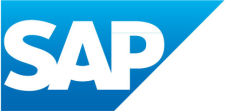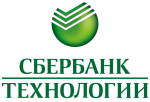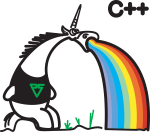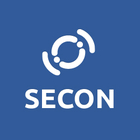Принятые доклады
Программный комитет SECR принял на конференцию следующие доклады и воркшопы. Продолжительность докладов: 30 или 15 минут, часть докладов принята при условии, что авторы доработают их по замечаниями Программного комитета, и доработанная заявка пройдет оценку ПК. Подробности будут сообщены авторам индивидуально в течение нескольких дней.
Aleksandr Serbul, 188 Cloud service of personalized recommendations for 20,000 online stores: secrets, algorithms, technology
Aleksey Alekseev, 259 On development of application for Intel RealSense to animate avatar based 3D models using user’s mimicry
Alex Galkin, 197 Trader desktop – OS on top of OS.
Alex Pankov, 279 Usability testing in professional closed system. A process, complexity and result
Alexander Fedotov, 181 Risk managment or when the product should be released
Alexander Kataev, 250 Computer vision and augmented reality application development – now it is easy
Alexander Khrushchev, 231 Harness the rhino. Java Scripting API
Alexander Kolesnikov, 306 About experience of working with metrics for software quality assurance
Alexander Korshak, 202 Smart TV Platforms through the eyes of mobile application developers
Alexander Shalimov, 268 SDN programming challenges and approaches to handle them in the Runos OpenFlow controller
Alexandr Suhinin, 283 Discovering clones in software: from complex algorithms to everyday desktop tool
Alexey Arseniev, 162 Application integration experience in SAP. Rich vs thin clients, native vs Web based
Alexey Florinsky, 220 Organization of the analytics department
Alexey Fyodorov, 217 Unsafe in Java 9: to be or to be removed?
Alexey Mitsyuk, 264 Software Engineering Tools in Education
Alexey Moskvin, 156 Automated deployment of database changes using Liquibase
Alexey Petrov, 293 Systems Engineering for Software Engineers in Top-Ranking Technical Universities in Russia
Alexey Pryadko, 103 Experience of internet shop setup for large and well known retailer on eCommerce platform IBM Websphere Commerce
Anastasiia Fedostceva, 129 Metrics in software development and testing process, or tyranny of averages
Andrasz Husty, 312 Mobile imprinting in practice – forming new dependencies in user
Andrey Gordienkov, 137 Transitive Dependencies: Not the ones they pretend to be
Andrey Konovalov, 128 Experience of developing Cloud service for Video Surveillance
Andrey Sabynin, 107 How to manage priorities of tasks assigned to IT in retail bank
Anna Abramova, 157 Requirements management is not only about requirements
Anton Naumovich, 239 clang as a parsing and code generation tool for C++
Anton Nesterov, 275 Productisation: moving from outsourcing to product development
Anton Ovchinnikov, 144 Hadoop has changed. Will become Data Scientists happier?
Anton Semenchenko, 294 Triangle “Open kimono principle + Delegation + Self-Communication Management” as a motivation tool
Anton Semenchenko, 295 Unorthodox universal motivation model built in accordance with mathematic ‘happiness’ concept
Artem Kolomeec, 310 5 Ways to Kill team via Code Review
Boris Volfson, 277 Why Doesn’t Technical Specification help your project and what should you do?
Denis Doronin, 131 Creating Video Assistant for Retails. Gained experience.
Denis Silakov, 149 Testing of software based on third-party components by the Linux distribution example
Dmitri Kiryanov, 255 DIY: seven-league boots and magic tablecloth
Dmitriy Dzyuba, 108 Feature must be Green
Dmitriy Kalaev, 205 Out of Your Comfort Zone: How to Discover Growth Potential in Your Business?
Dmitry Bezuglyy, 299 Drivers & patterns of organization of effective software development
Dmitry Bugaychenko, 127 Smart data processing at OK.ru
Dmitry Cheremushkin, 307 Automated tests in the pocket
Dmitry Peterson, 167 How we introduced the quality service
Elena Belyaeva, 271 How can the delivery control themselves effectively?
Elena Belyaeva, 276 Gamification in Quality Management System for better engagement
Eugene Shevkoplyas, 142 Performance testing: standard mistakes
Eugene Zouev, 252 Some aspects of a modern common-purpose programming language design
Eugeny Govako, 151 Automated UI testing in isolation: evolution of Simulator approach
Evgeny Kolesnikov, 180 Aspects of Antifragile Software Development for Service Company.
Evgeny Vinogradov, 263 From history to vectors: data warehouse for scoring system
Igor Bespalchuk, 176 Architecture: natural and artificial
Igor Gustomyasov, 300 Secure Gateways in Banking: Real-Life Scenarios
Igor Markov, 304 Real-Time Image Comparison Using The Cloud Computing
Igor Odintsov, 233 IT-education: how to teach what not exists?
Igor Suhorukov, 118 AspectJ Scripting
Ilya Kashtankin, 251 management of project stakeholders – expertise SimbirSoft
Ilya Niklyaev, 273 Development of UAV navigation algorithm with use of ROS
Inga Egorova, 309 Usage of design patterns as a kind of components of software architecture
Kirill Danilov, 254 Cross-platform desktop app development with nw.js
Kirill Krinkin, 270 Block Level Data Compression in Linux. Pro et contra
Kirill Shatilov, 114 An Architecture for Secure Web Resource with Outsourced Database
Konstantin Bychenkov, 147 Big data in medical image processing
Konstantin Savenkov, 133 Measuring the agile process improvement
Ksenia Sternina, 125 How research helps to develop and verify interfaces (the experience of Mail.ru search engine on pictures)
Leonid Migunov, 73 Test House – organization of testing for projects (geographically distributed teams) in one software enterprise solution.
Maksim Gaponov, 249 Collaborative product discovery
Marat Khabibullin, 248 On Development of Static Analysis Tools for String-Embedded Languages
Marina Kudinova, 282 CPU utilization prediction methods overview
Marko Kazhich, 224 Scalable workflows for front end development
Michael Malyshev, 141 Specific of portable Android devices development
Michael Rootman, 152 PleskFS – hybrid file system for cloud web hosting. Implementation and features of use.
Mikhail Malevannyy, 226 Aspect Markup of a source code for quick navigating a project
Mikhail Matrosov, 123 Daily C++
Mikhail Salamatov, 67 From a freshman to an engineer. 4 university relations programs of EMC Russia Center of Excellence.
Nadezhda Mincheva, 208 Painless Integration
Nikolay Yasinskiy, 166 How to create a development team of students with minimal cost and risk
Oksana Nekrasova, 163 Agile adoption in the corporation: three waves of transformation
Olesya Voronovich, 195 Secrets of Agile-teams motivation. Are your team happy?
Olga Pavlova, 272 Embedding Continuous UX into production cycle of IT-company
Pavel Egorov, 122 Why you should organize your IT-conference and how to do it
Pavel Kiselyov, 164 UX Kit – taming UX of a complex financial software
Pavel Muzyka, 160 Code generation in .NET: theory, practice and T4 templates
Pavel Novikov, 287 Justification of the Choice Learning Algorithms of Neural Networks for Indoor Mobile Positioning
Peter Kalambet, 225 Zero-knowledge proof based authentication service in the cloud
Rina Uzhevko, 106 Manageability and Testing : experience using
Roman Belkov, 241 Kotlin for robotics: it is functional
Roman Kvartalnov, 155 Design for development
Ruslan Savvotin, 209 How to launch projects quickly while keeping the User Experience in mind
Sergei Karbovskii, 262 To Fear or Not to Fear: A Daunting Interface Paradigm
Sergey Avdoshin, 301 Ecosystem of the SWEBOK Guide V3.0
Sergey Gridnev, 308 Development vs Testing – who is on the cricial path
Sergey Kochetov, 223 Particular features of the development of mobile applications for video conferencing
Sergey Sobolev, 130 Theory of Constraints (TOC) application experience in R&D projects
Sergey Sukhanov, 184 Meteor on hands of developers
Semen Petkov, 230 Improving collaboration with business. How to help the team to focus on the really important things?
Slavy Slavov, 204 Why security testing is more important than ever
Svetlana Bolsunovskaya, 191 5 “enemies” of teamwork in the SAFe and how to fight them
Svetlana Lazareva, 199 Automatic Request Analyzer for QoS Enabled Storage System
Svetlana Mukhina, 274 Coaching Tools on Practice
Svetlana Mukhina, 278 Project Meeting Facilitation
Svetlana Mukhina, 281 Metrics that Bring Value
Timofey Turenko, 221 Automatic tool for multi-configuration environment creation for database server and database proxy application testing
Vadim Mustyatsa, 298 Demonstration of the conversational possibilities and the benefits of the Gherkin language in Agile Software Development projects
Vadim Zubovich, 261 Desktop automation testing tools. Comparison.
Vasiliy Mikhailov, 72 How do we measure development productivity and software quality in National Settlement Depository
Vasiliy Tolstoy, 266 Cooperative network virtualization in the industrial server applications on Linux
Vasily Litvinov, 234 Python Code Performance: Tools for Tuning
Victor Sychev, 237 Talents management in the IT company’s reality or how to manage talents and not to damage the company
Vladimir Kishik, 216 OpenOnload: raising performance of distributed systems
Vladimir Kupratsevich, 178 Localization in a cloud platform. Instructions for software developers
Vyacheslav Moskalenko, 297 Quickly and effectively. How to estimate large projects?
Yuri Vedenin, 384 How to dive into the new business domain efficiently and productively
Yury Kupriyanov, 269 National Open Education Platform: Architecture and Ecosystem
Прием докладов завершен.
22–24 октября в Центре Digital October в Москве состоится 11-я международная научно-практическая конференция «Разработка ПО/CEE-SECR 2015» — одно из важнейших событий в индустрии разработки программного обеспечения России.
Без малого тысяча ИТ-специалистов — от программистов и представителей научного сообщества до предпринимателей и инвесторов из более чем пятнадцати стран — соберутся для общения, обмена опытом, и продвижения науки и индустрии.
За 11 лет SECR поддерживали такие организации как Российская Венчурная Компания, Intel, Deutsche Bank, JetBrains, SAP, Сбербанк Технологии, First Line Software, Oracle, EMC, Google, IBM, Microsoft, EPAM, Luxoft, а также IEEE, ACM, некоммерческое партнерство РУССОФТ, АП КИТ и многие другие.
Среди ключевых докладчиков прошлых лет: Дино Эспозито, Ивар Якобсон, Джеф Сазерленд, Бьярн Страуструп и другие всемирно известные специалисты.
CEE-SECR – многопрофильная конференция, позволяющая специалистам и руководителям охватить широкий спектр происходящего в индустрии разработки ПО, уловить тенденции и углубить понимание, в том числе в смежных с основной специализацией областях.
Приём заявок завершён
Темы докладов
Принимаются доклады на темы, относящиеся к разработке ПО. Особо приветствуются доклады по трендовым вопросам.
Трендовые темы
- Software-Defined Architecture
- ИТ в масштабе Интернета (Web-Scale IT)
- Big data, Smart data
- Разработка мобильных и кросс-платформенных приложений
- Микроконтроллеры с wifi
- Интернет вещей
- Computing Everywhere
- Безопасность при проектировании (Security by Design)
- Risk-Based Security and Self-Protection
- Интернет угроз (Internet of Threats)
- Облачная безопасность (Cloud Security)
- Безопасность мобильных приложений
- Контекстно-зависимые системы (Context-Rich Systems)
- Новые практики коллаборации (Эффективные управляемые коммуникации)
- Social computing
Традиционные темы
- Архитектура программных систем
- Технологии и средства программирования
- Облачные вычисления
- Программирование роботов
- Встраиваемые системы
- Тестирование, верификация и анализ ПО
- Безопасность и надежность систем и ПО
- Usability и проектирование интерфейсов (UX)
- Инженерия требований и прикладной системный анализ
- Управление проектами и продуктами
- Гибкие методологии (Agile, Essence/SEMAT)
- Управление качеством
- Человеческий капитал и образование
- Бизнес и предпринимательство в сфере разработки ПО (стартапы, патентование и пр.)
Разработка ПО в предметных областях
- Банки и финансы
- Здравоохранение
- Транспорт
- Гос. сектор
- Игровая индустрия
Другие темы
Рассматриваются заявки по любым темам, относящимся к разработке ПО.
Подача заявки
Необходимо загрузить следующую информацию в систему подачи:
- Тема и краткое описание на русском и английском языках. Публикуются в разделе «Заявки» на сайте. Описание обязательно должно включать 1-3 предложения, раскрывающие суть доклада.
Примеры
Пример 1. «Если у слушателей проблемы с разработкой интерфейсов, они смогут почерпнуть в моем докладе идеи для использования DSL для модификации автоматически созданных форм. Этот подход не встречается в литературе и других открытых источниках, а успешная реализация у нас показывает его работоспособность».
Пример 2. «Я представлю свой опыт по организации взаимодействия со сложными заказчиками, основанный на 7-летней работе и более 20 успешных проектах в форме кейсов с обобщениями. Думаю, что слушатели смогут воспользоваться этим опытом в своей повседневной работе, так как многие кейсы возникали неоднократно и с разными заказчиками.»
- Расширенная аннотация на русском или английском языках объемом не менее 1800 знаков. На этапе рассмотрения заявки аннотации могут публиковаться или нет (на усмотрение автора).Содержание расширенной аннотации должно в полной мере отражать суть будущего доклада: необходимо представить не только предметную область доклада, но и какие конкретно вопросы будут раскрываться в выступлении, какие решения (научные, технологические, инновационные или другие) предлагаются авторами.
Не следует в качестве расширенной аннотации присылать списки слайдов, планы докладов, рекламные материалы, ссылки на форумы или ранее написанные доклады или статьи.
Многие авторы присылают развернутое описание проблемы и обоснование её важности, а в докладе обещают раскрыть решение. Этого не достаточно: само решение должно быть изложено и обосновано, будь то оригинальная идея, новая комбинация идей или успешная практика. Желательно, а для статей — обязательно, соотнести предлагаемое решение с аналогами, доступными в открытых источниках.
Если автор позиционирует свою статью как научную работу, то вместо расширенной аннотации следует прислать полноценную статью объемом до 10-ти страниц в соответствии со стандартом оформления научных статей.
В заявке на проведение мастер-класса необходимо указать длительность, целевую аудиторию и программу.
- Фото и краткая биография автора или авторов, 3-5 предложений. Cсылки на публикации, публичные выступления, профили в профессиональных соц. сетях приветствуются.На этапе рассмотрения заявки краткая биография и фото могут публиковаться или не публиковаться на сайте конференции на усмотрение автора.
Также необходимо указать:
- класс доклада: представление научных результатов, которыми можно воспользоваться; представление идей своей разработки для действий по аналогии; информационный обзор; представление технологии; обучение новой технологии; обучение новому средству; case study — представление кейса; опыт использования технологии;
- тематику доклада: одна или несколько областей из списка тем конференции.
На конференцию не принимаются
- Доклады рекламного характера
- Доклады, ранее звучавшие на конференциях
- Статьи, ранее опубликованные или находящиеся на рассмотрении программными / редакционными комитетами других конференций / рецензируемых журналов.
Процесс рассмотрения
После получения заявки члены Программного комитета вправе задать вопросы или дать рекомендации автору. Если заявка отвечает формальным требованиям, она публикуется в разделе «Заявки на доклады» сайта конференции. Автор может откорректировать свою заявку в системе до даты окончания приема докладов: 27 июля 2015 г.
После 27 июля Программный комитет начинает рецензирование и отбор докладов.
Расширенные аннотации и статьи рассматриваются, как минимум, тремя представителями Программного комитета, которые дают свои рекомендации по включению в Программу, а также могут дать дополнительные рекомендации авторам докладов / статей. Заявка может быть принята условно, с требованием автору провести доработку или дать дополнительные разъяснения, после чего назначается дополнительное согласование.
После вынесения решения по докладам/статьям авторам рассылаются уведомления; список принятых докладов/статей также публикуется на сайте конференции.
Регламент выступлений
Время выступления (вместе с ответами на вопросы):
- 30 минут для обычных докладов
- 15 минут для блиц-докладов
- 2-8 часов для мастер-классов.
Язык выступления: русский или английский. Слайды могут быть как на русском, так и на английском языке.
Преимущества для авторов
- Авторам принятых докладов предоставляется право бесплатного участия в конференции (1 бесплатный участник на доклад)
- Лучшие исследовательские доклады будут награждены премиями Бертрана Мейера (от 5 до 25 тысяч рублей)
- Научные статьи будут опубликованы в электронной библиотеке ACM
- Видеозаписи, слайды, краткие аннотации докладов, а также био автора публикуются на сайте конференции.
Важные даты
- 27 июля 2015 — окончание приема докладов. Авторам настоятельно рекомендуется подавать заявки заранее, чтобы иметь возможность их доработать по результатам первичных комментариев Программного комитета. Заявки, поданные после 15го июля первичных комментариев не получат.
- 31 августа 2015 — уведомление авторам о принятии доклада
- 30 сентября 2015 — подача окончательной версии
- 22-23 октября 2015 — основные дни конференции.
- 24 октября 2015 — день мастер-классов и курсов
Контакты
Николай Пунтиков, председатель CEE-SECR 2015
Юлия Крючкова, секретарь CEE-SECR 2015
Email: contact@secrus.org
Москва: +7 499 703 16 55
Санкт-Петербург: +7 812 336 93 44
 English
English




























